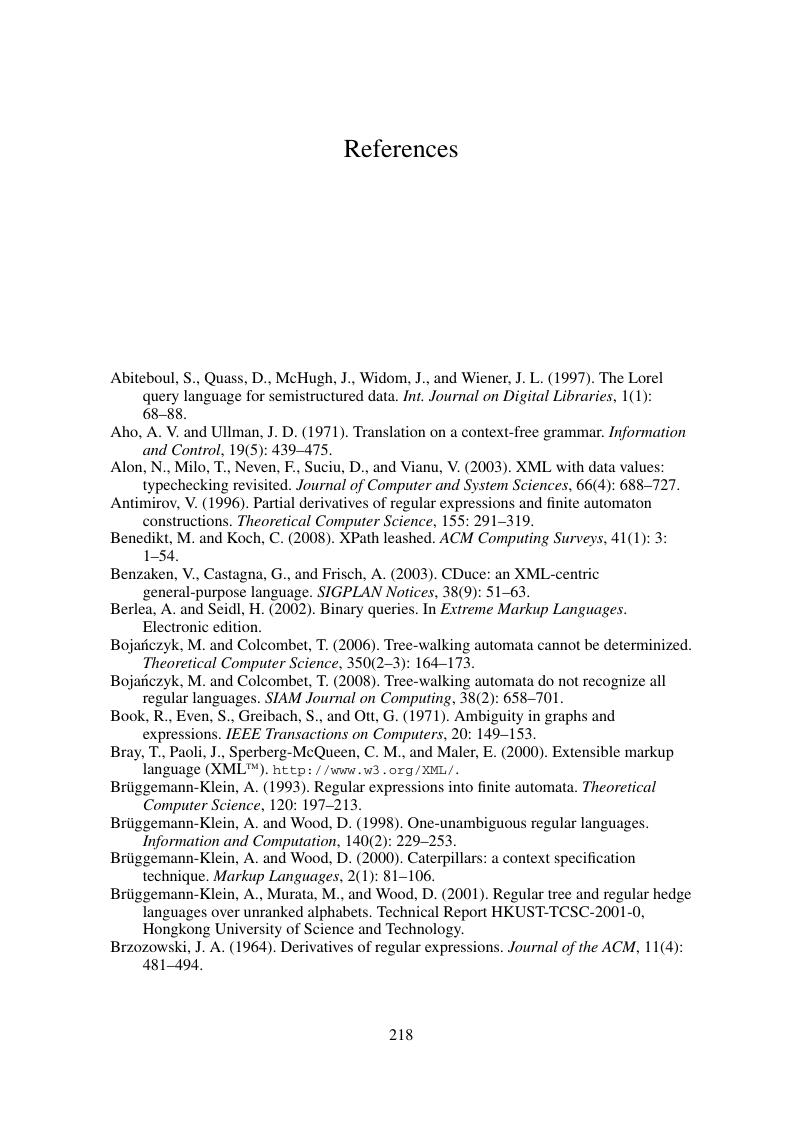References
Published online by Cambridge University Press: 05 July 2014
Summary

Information
- Type
- Chapter
- Information
- Foundations of XML ProcessingThe Tree-Automata Approach, pp. 218 - 222Publisher: Cambridge University PressPrint publication year: 2010
